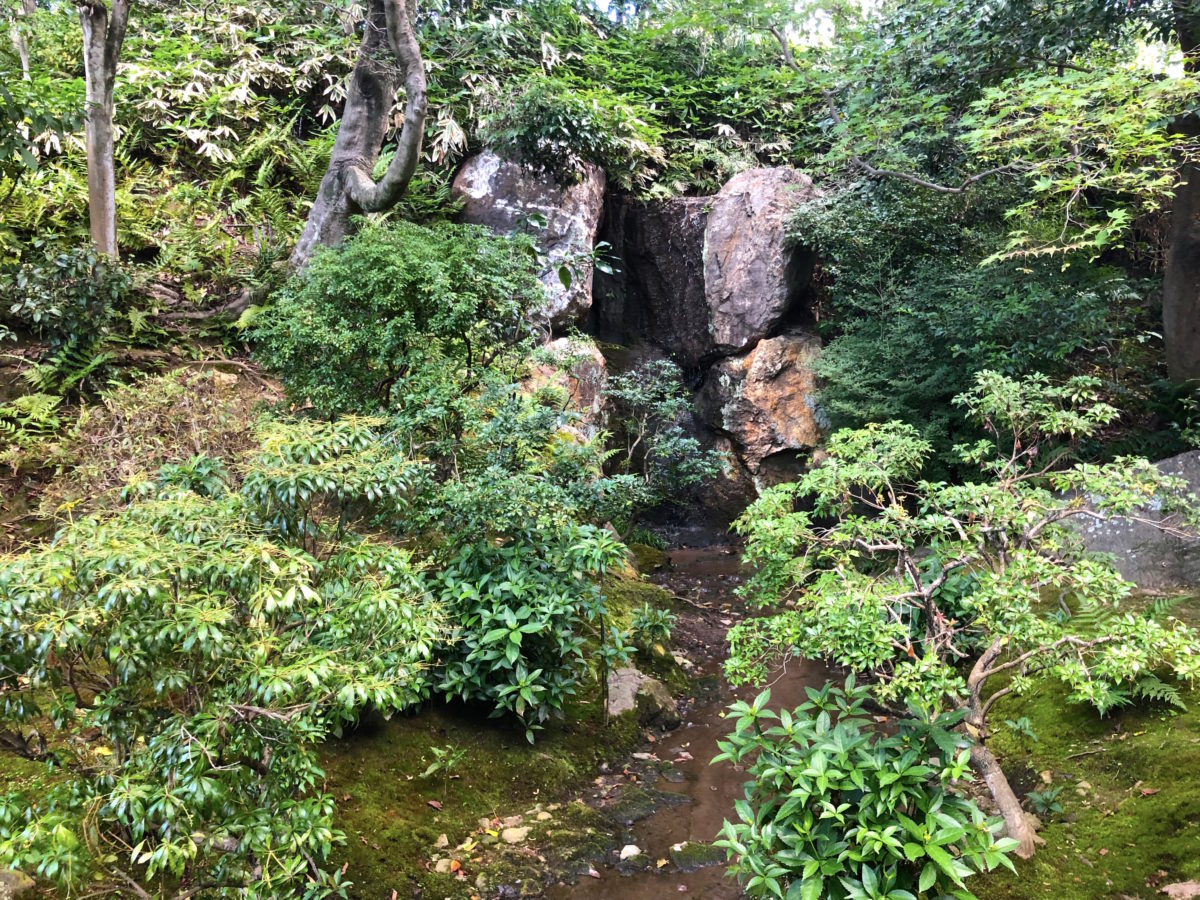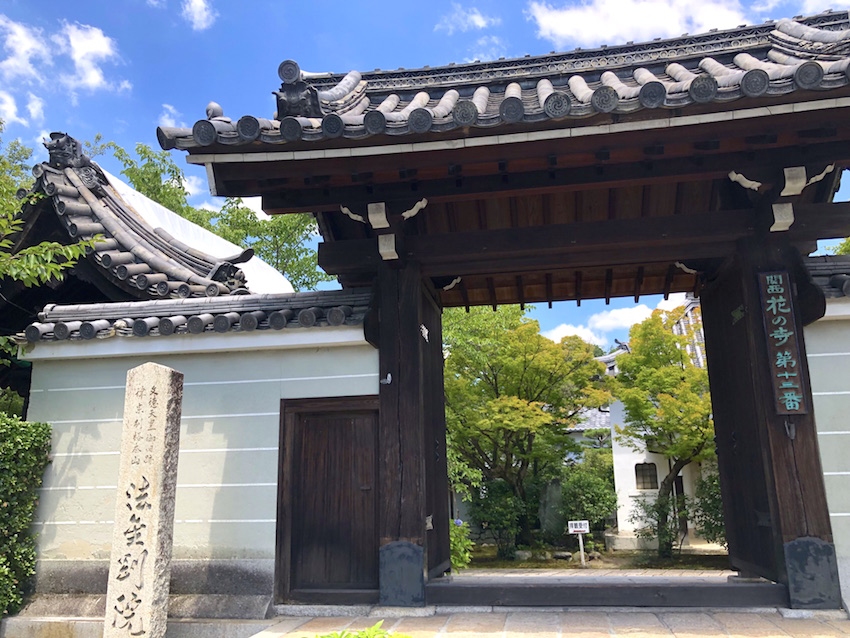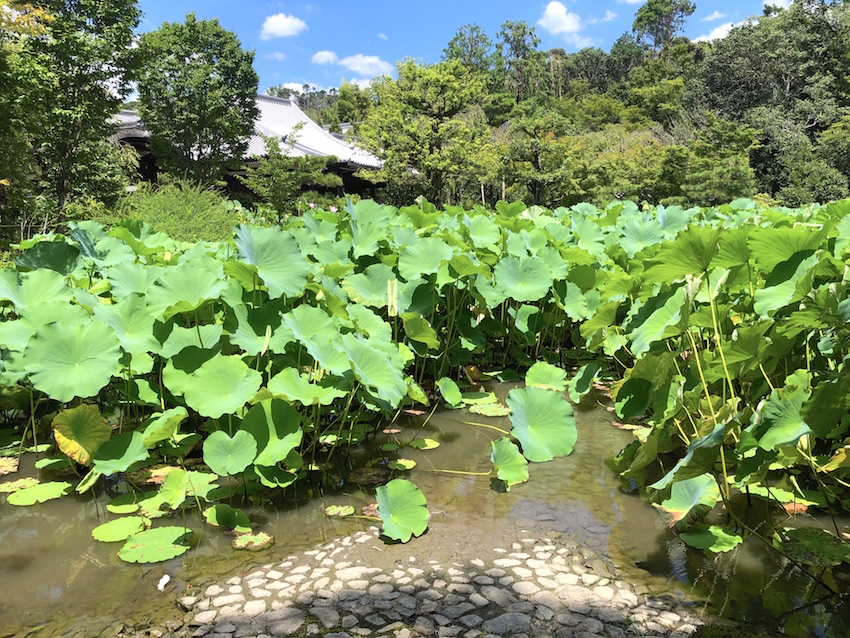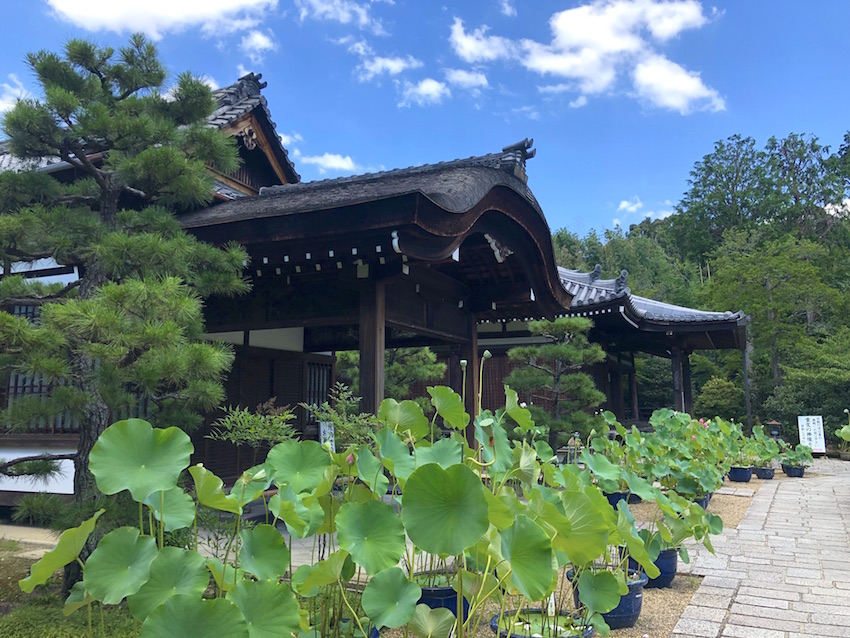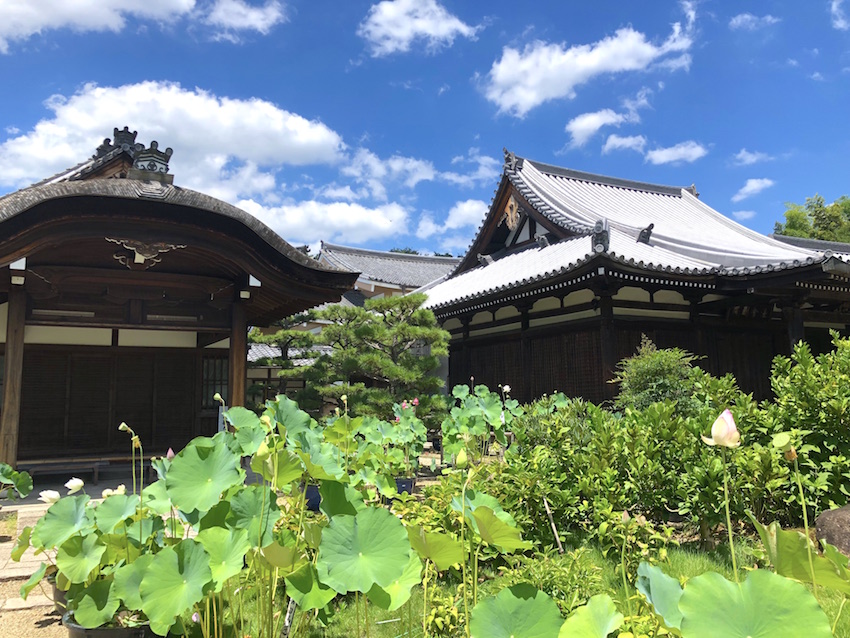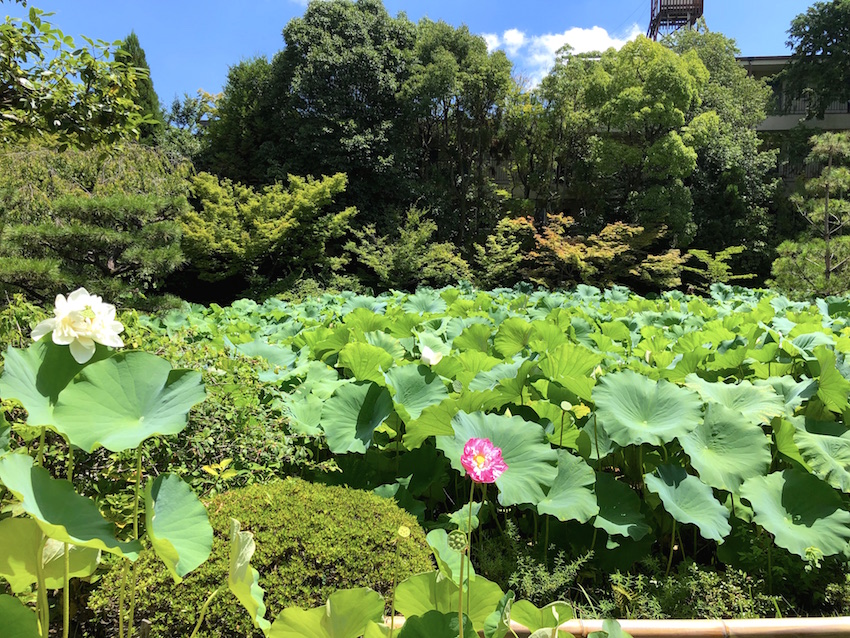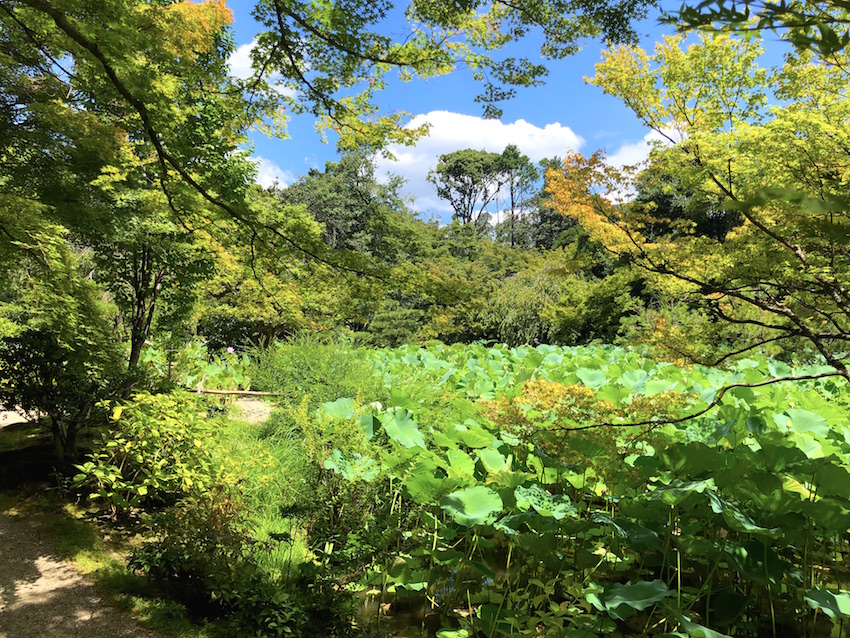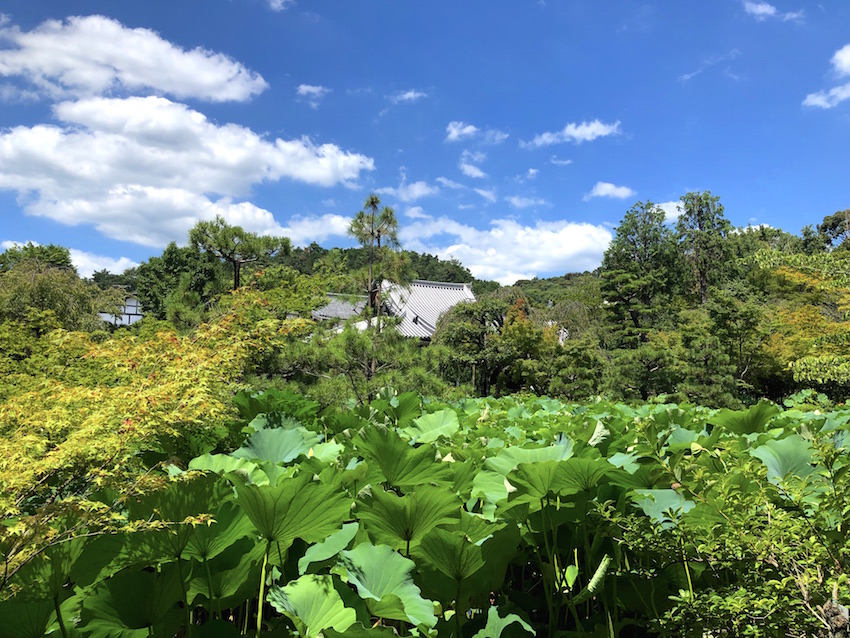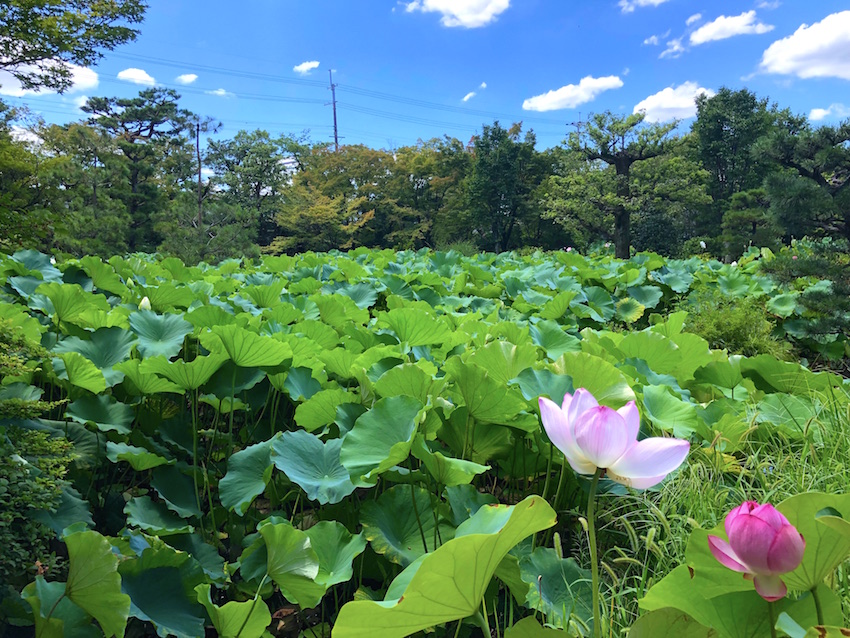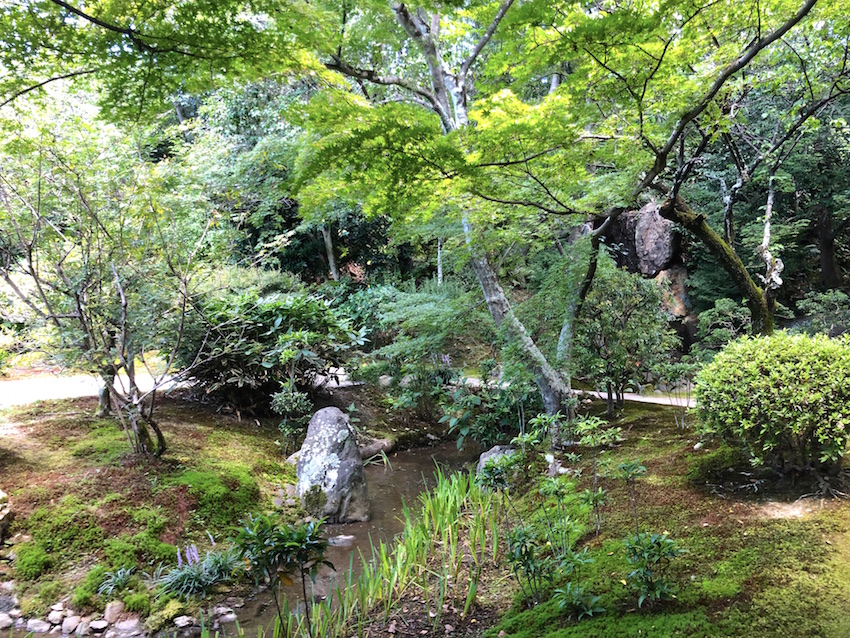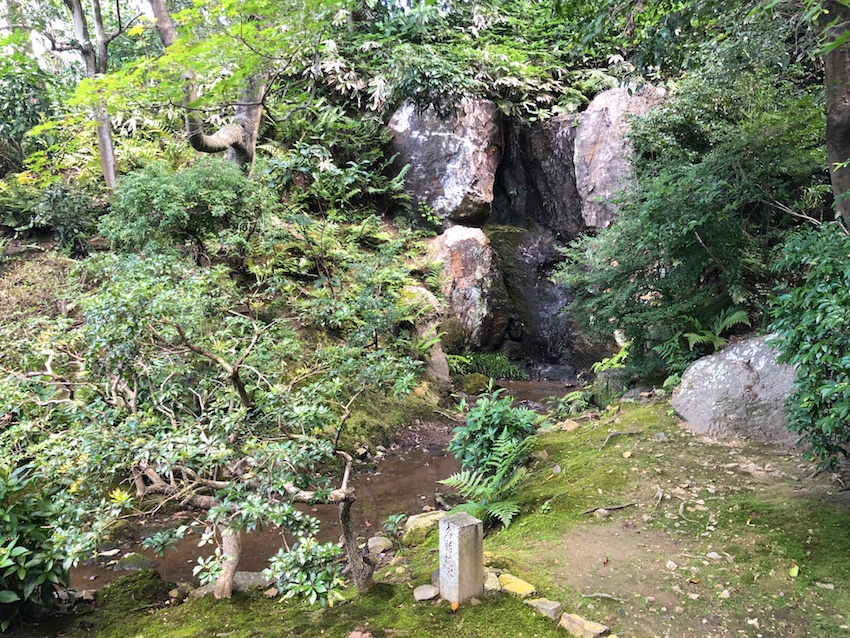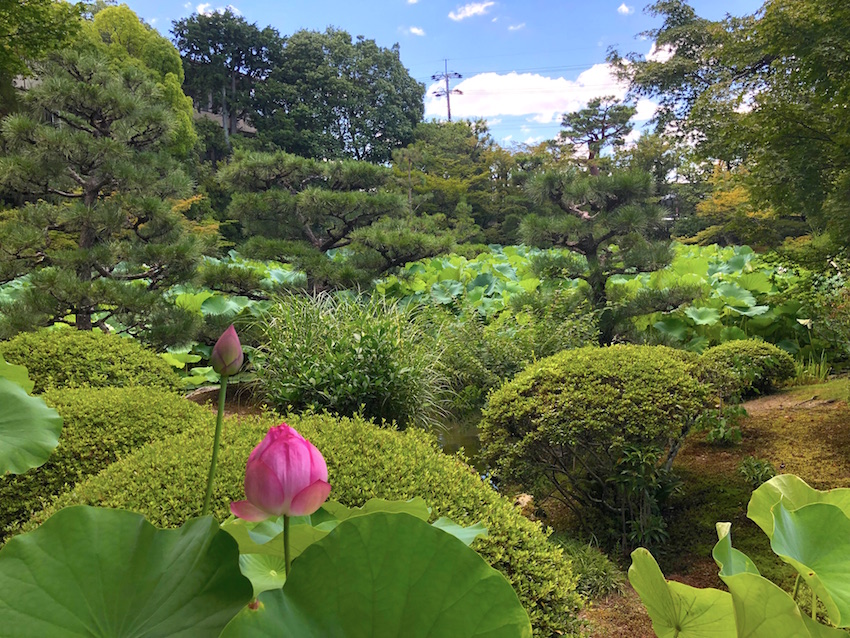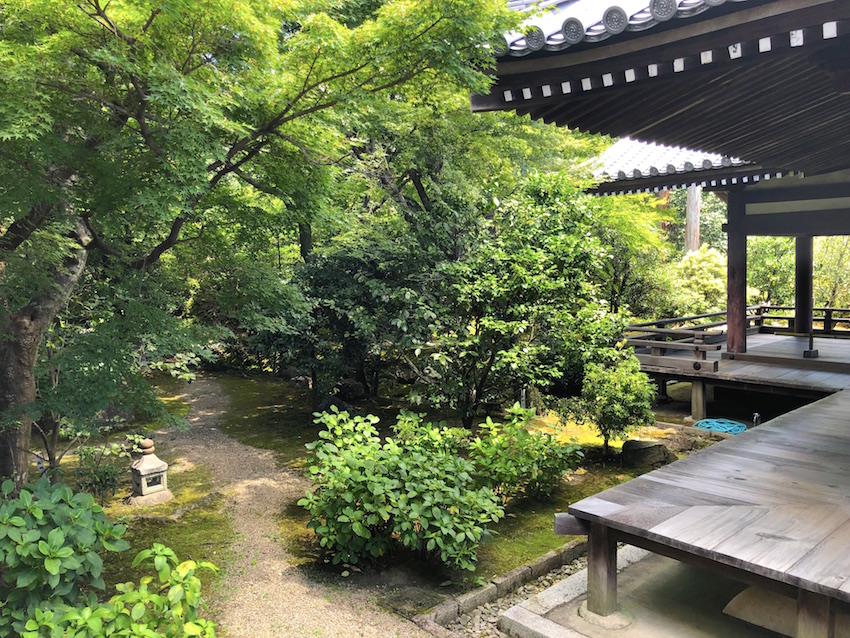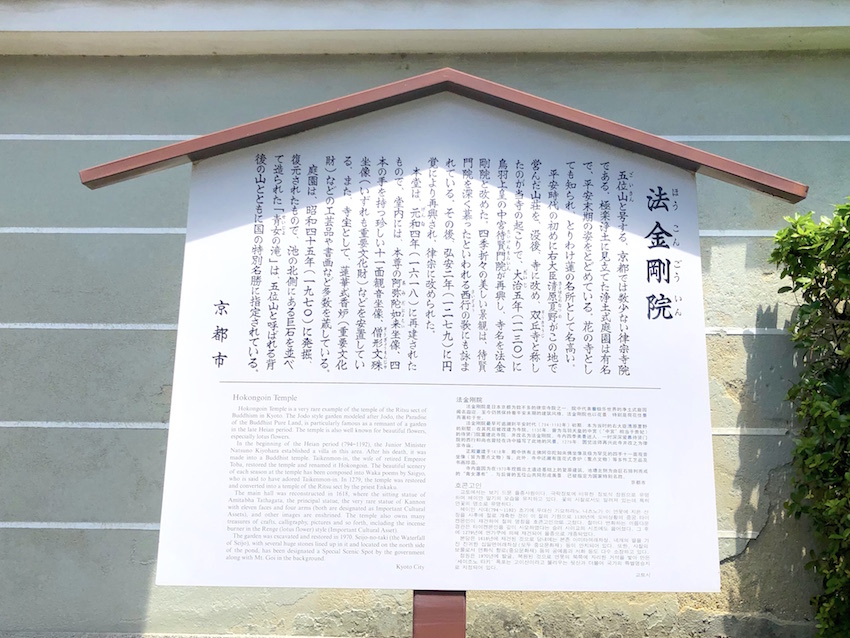The Jodo-style garden (designed in representation of the Buddhist Pure Land) created at around the 1100s at Goisan Hokongo-in Temple, a temple affiliated with the Ritsu sect’s Toshodai-ji Temple, has been designated as a Special National Site of Scenic Beauty. Also renowned for the lotus flowers that bloom on its pond in July, this “Lotus Temple” is ranked number 13 among the Kansai region’s “flower temples.”
Summer of 2019 was my first visit there in around five years! (Only a few lotus flowers were left then.)
Hokongo-in Temple’s long history dates to around 830.The Minister of the Right (Udaijin), Kiyohara no Natsuno, had a mountain villa here around 794.After his death, the villa became Narabigaoka-dera Temple (the mountain there had been named Mt. Goisan by Emperor Nimmyo at the time). Then in 858, the name was changed to the Tenan-ji Temple by Emperor Montoku who also added more halls and structures. In 1130, Emperor Go-Shirakawa’s mother Taikemmon-in, the empress consort of Emperor Toba, restored it as Hokongo-in Temple.
In conjunction with that restoration, Taikemmon-in ordered the creation of this Jodo garden designed in the chisen-kaiyu style around a central pond. Although I’ve never been able to fully grasp the garden’s chisen-kaiyu design due to the lotus flowers filling it during both of my visits. . . . Seijo-no-Taki at the back of the garden, said to be Japan’s oldest man-made waterfall, was created by monks Rinken and Joi lining up enormous stones. As a historical site with traces lingering today where we know precisely who wanted it and who created it, this garden is a rare treasure. For this reason Seijo-no-Taki in Hokongo-in Temple along with Mt. Goisan has been designated as a Special National Site of Scenic Beauty.
The current garden was excavated and reconstructed from the 1960s to 1970s. It now seems to be smaller and with fewer buildings than in its glory days as a result of the chaos of war and natural disasters. Still, the view of the priest’s quarters and worship hall facing the pond, reconstructed from the 1600s, is beautiful.
This garden also showcases several nationally designated Important Cultural Properties from the late 700s to mid-1300s . Starting with the garden’s focal point, a seated statue of Amitabha, visitors can also see Juichimen Kanzeon Bosatsu (the 11-headed Buddhist Goddess of Mercy), a statue of Monju Bosatsu in the guise of a monk, and a Jizo Bosatsu statue (the protector of deceased children). Along with the lotus flowers, there are also lovely, verdant Japanese maple trees around the pond, so I also want to try coming here in autumn for the colorful leaves!
(I visited in July of 2014 and August of 2019. The information below is accurate as of the dates of my visits. Please check the relevant official websites for the latest information.)


